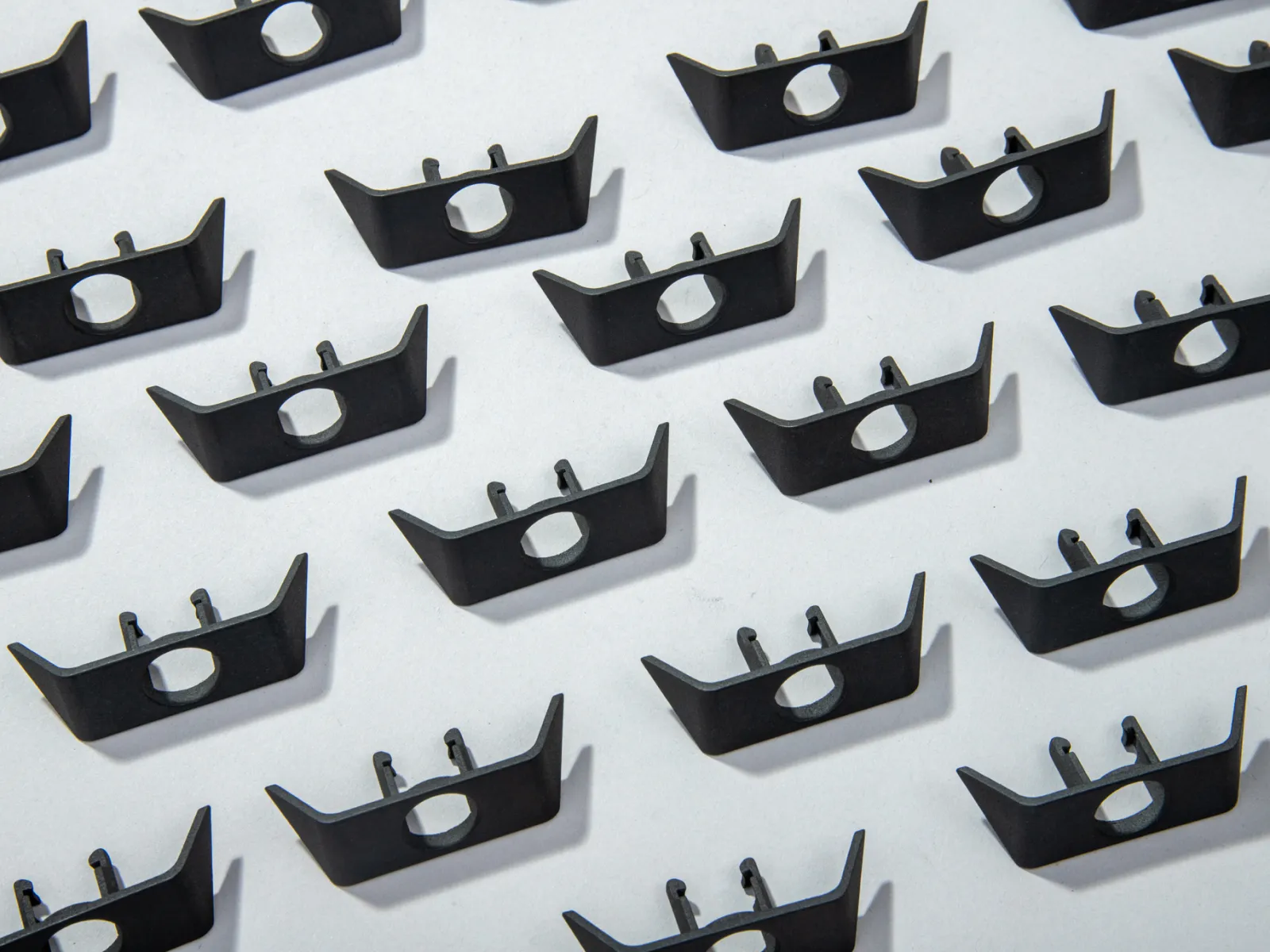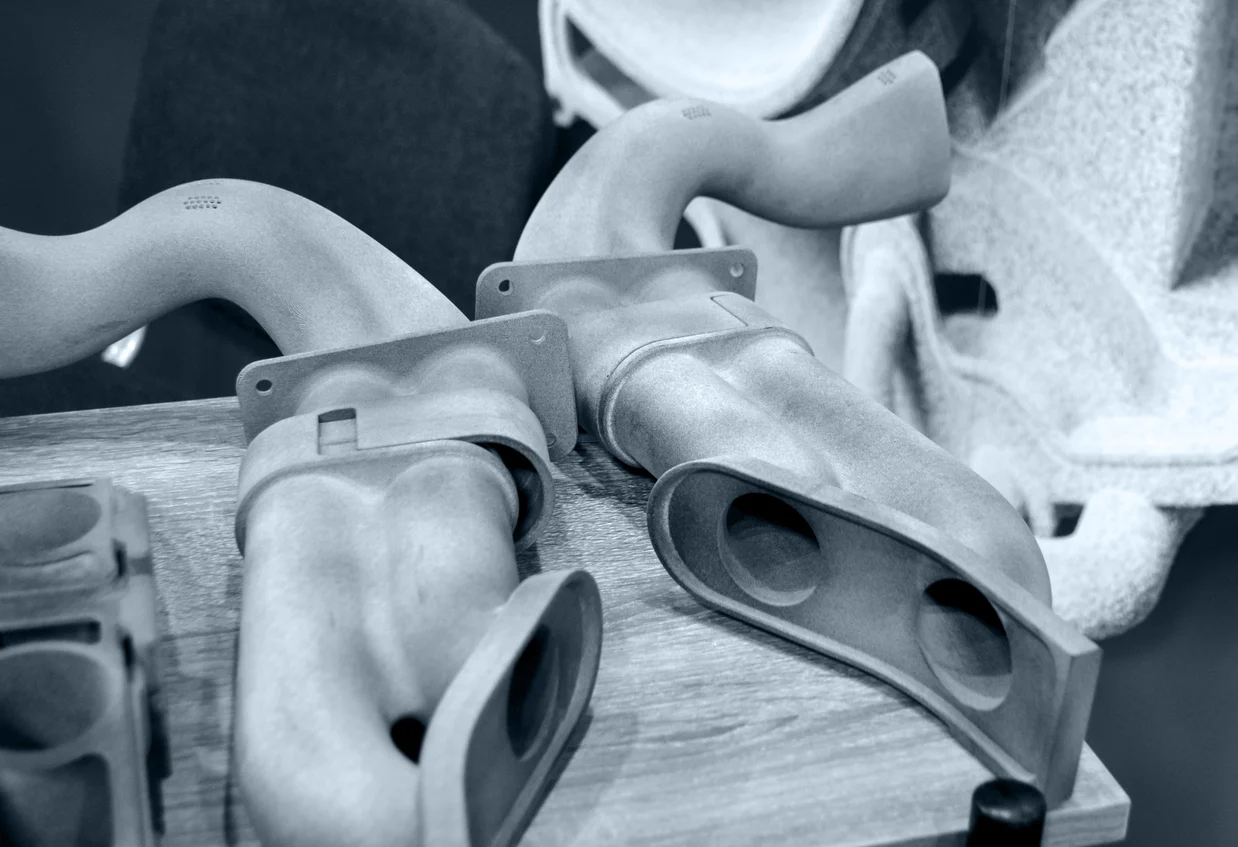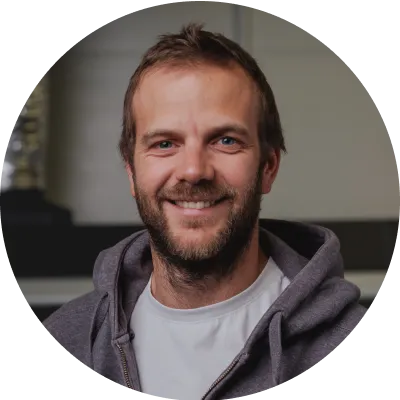The emergence of 3D printers has forever revolutionized the process of creating electronic devices, machines, and even advanced tools and vehicles. In just a few years, small printers based on FDM (Fused Deposition Modeling) technology have secured their positions in the workshops of virtually every R&D team in the world.
For a decade, ongoing printing of parts and prototypes has been a standard element of implementing new products and technologies, but for the last few years, we have been observing the next stage of this revolution from the front row.
Thanks to HP Multi Jet Fusion technology, 3D printing is becoming not only an ongoing element of the prototyping process but also a final technology supporting the creation of durable parts and attractive device housings.
What can modern 3D printing do?
When FDM 3D printers became widely used in the device creation process several years ago, MJF technology was only in the early development phase. Understanding the potential of 3D printing, HP wanted to create devices with a much wider range of applications than FDM.
These printers were to be much larger and more precise to allow for the rapid creation of many more parts and large-sized elements. The manufacturer realized that 3D printing could be a very profitable solution, an excellent alternative to injection technology.
Multi Jet Fusion printers have opened a new stage in the history of 3D printing, based on four main features:
- Production speed: MJF printers are large devices designed for production use, and therefore have a much larger chamber. Moreover, individual elements are created at the same time, which means that they are able to produce up to 1,000 elements in the same time as FDM printers. would produce several dozen.
- Print quality and precision: MJF printers provide accuracy up to +/-0.3 mm for objects up to 100 mm long and +/-0.3% for objects over 100 mm. Unlike FDM, where layers can be visible, parts produced with MJF have smoother surfaces and the same strength on every axis. They can therefore be used in more demanding applications such as electronics housings or auto parts.
- Possibility to print almost any geometry: MJF technology allows you to print complex geometries that would be difficult to achieve using FDM. At MJF, precise material application and the lack of need for supports for complex structures enable the creation of more advanced and functional designs, giving greater freedom to engineers and designers.
- Profitability in short- and medium-series production: MJF became the first additive technology to allow for the cost-effective creation of a large number of parts, which, combined with quality and precision, made it possible to use it in the production of device housings.
Overcoming the opinion of “prototyping technology”
Although the first Multi Jet Fusion devices hit the market in 2016, many designers still consider 3D printing a technology used only for prototyping.
As a company specializing in MJF technology, we regularly encounter quite a surprise when we talk to device manufacturers and describe the possibilities of this solution. It happens that some clients come to us after several unsuccessful experiments with other technologies, including 3D printing. However, after several orders, it turns out that the solution we offer is significantly different from the previously held opinion about additive technologies.
After all, we often hear this kind of feedback:
“The implementation of our projects without the support of Cubic Inch would be virtually impossible. The technology was perfect for us, and the collaboration process was flawless.” – Piotr Gryszczuk, CTO of InnovationAG
However, the negative opinion about 3D printing as a technology used mainly at the “proof of concept” stage is still quite common, which is, of course, understandable if we take into account how long 3D printing has been understood only as FDM.
This is how our designer, Michał Figat, describes the situation:
“Although MJF technology belongs to a large group of solutions generally called “3D printing”, it is quite specific and significantly different from competing approaches. When designing for MJF, we have more options and room for maneuver, which can have a significant impact on the project – e.g. by reducing the weight of the part and thus the cost of the order. Unfortunately, without experience in MJF, it is very difficult to make the most of this potential, which is why we show our clients these optimization possibilities every time.”
The revolutionary impact of 3D printing on the process of product design and implementation
As some collaborations show us, the design possibilities of MJF technology are not obvious even to designers with experience with 3D printing. This is how Michał Figat remembers one of the projects:
Some time ago, we received a project adapted for 3D printing from one client, but I quickly noticed that by making a few corrections, it would be possible to further reduce its weight, which is one of the key factors influencing the project valuation. So I took care of the file. After introducing the changes, I managed to reduce the weight of the part from 400 g to 130 g. The cost of the project was reduced by over 50%.
Another key aspect that companies pay attention to is the impact on the production process itself. A particularly appreciated advantage is the ability to quickly process orders and make any design changes between series without additional costs. A perfect example of this was, among others, our cooperation with AM Systems, which installs additional car equipment.
Projects for the automotive industry always have the tightest deadlines. This is the specificity of the industry. So when it turned out that a few days of delivery for 600 pieces of parking sensor housings was a realistic deadline, the client was quite shocked.
However, the most important thing for the client was that we could make changes to the design before each order. The parts had to be precisely matched to a specific car model, so injection technology was out of the question. It quickly became clear that the customer was staying with us for a long time.

A revolution that is just beginning
An everyday element of our work is helping clients find the best methods to use modern 3D printing in their projects. We help you reduce costs and speed up processes, and we also constantly discover new applications of this technology.
As consultants, we thoroughly understand our clients’ needs to find the most beneficial ways to use Multi Jet Fusion in their processes and help answer questions such as:
- Will 3D printing be the right technology?
- How much can you save using 3D printing?
- How much of a time and process improvement can 3D printing bring?
If you are also looking for answers to these questions, Write to us.


